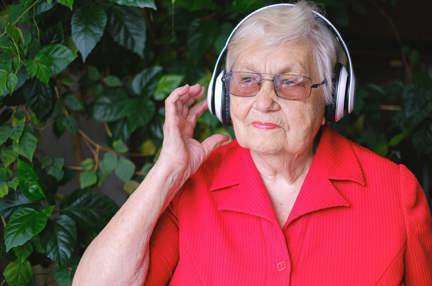Sight loss aids for reading printed text
One of the biggest issues faced by people with sight loss is losing the ability to read their own letters or enjoy books as they used to.
While there’s no question that a vision impairment makes reading more of a challenge, there are ways to make it easier.
The following techniques are commonly used by our veterans.

Good lighting
Even if you only have a little vision, a carefully positioned task lamp could be best investment you will ever make. Good lighting is key to making the most of our vision, so this is the best place to start when it comes to improving your ability to see text on a page.
Large print
Almost all printed correspondence and books come in large print these days. This increases the size of the text from the usual 10 to 12 point to a far bigger 16 to 18 point, which can make an obvious difference. To receive the large print version, you will need to request it.
Filtered glasses
Some people find that filtered glasses can increase contrast and definition, making it more comfortable to look at text on a sheet of white paper. A yellow filter is the most commonplace, but you’d need to see for yourself which colour filter works best for you.
Typoscopes
A typoscope is a simple, inexpensive reading guide made up of a sheet of dark card or plastic with a cut-out section. It only allows you to read a small amount of text at a time which, for some people, reduces visual confusion and dazzle. You can buy a pack of typoscopes from the RNIB shop.
Eccentric viewing
For eye conditions affecting central sight loss, such as macular degeneration, it’s possible to learn to read using your peripheral vision. Eccentric Viewing is a technique in which you find the best spot in your visual field, often the closest to the centre, and move the text through this window. The Macular Society provides free online training.
Magnifiers
Another technique is using a magnifier to enlarge text. This can take a bit of practise and you may find you need different levels of magnification for different types of reading. For example, spot reading for, say, a date or phone number, may need less magnification than larger amounts of text which can be more tiring to read.
There are all kinds of magnifiers, from conventional - which often come with lights - to electronic options. These days, apps are becoming increasingly popular too as they can easily be stored on smart phones and tablets. Your eye specialist should be able to advise on the best magnifier for you.
Audio
If magnifiers don’t work for you, or you have no vision at all, your best bet may be audio.
- Talking Books gives you access to thousands of books and publications in audio format, from novels to recipe books, to quiz books. Read our guide on Talking books and audio publications for more on this.
- You should be able to request audio versions of all your correspondence and bills. Read our guide on Reading bills and statements with low vision for more on this.
Optical Character Recognition (OCR)
OCR is an electronic device which takes a picture of printed text and reads it aloud for you. There are many different types of OCR, from simple standalone machines to more sophisticated, portable options. The RNIB shop is a good place to start.
You can also download OCR apps straight on to your smart phone or tablet, though these tend to read everything in an artificial voice.
If you are a beneficiary of Blind Veterans UK, speak to your local team about aids to help you with reading.
Highlighted content
Getting ready for the day with low vision
7 Nov 2023
Tips and techniques to help blind and partially sighted people with washing, dressing and taking medication.

Seeing text more clearly on a screen
19 Oct 2023
Enhancing your screen reading experience across different devices, from computers to mobile phones.

Talking books and audio publications
27 Oct 2023
How to access the thousands of books and publications available in audio format.
